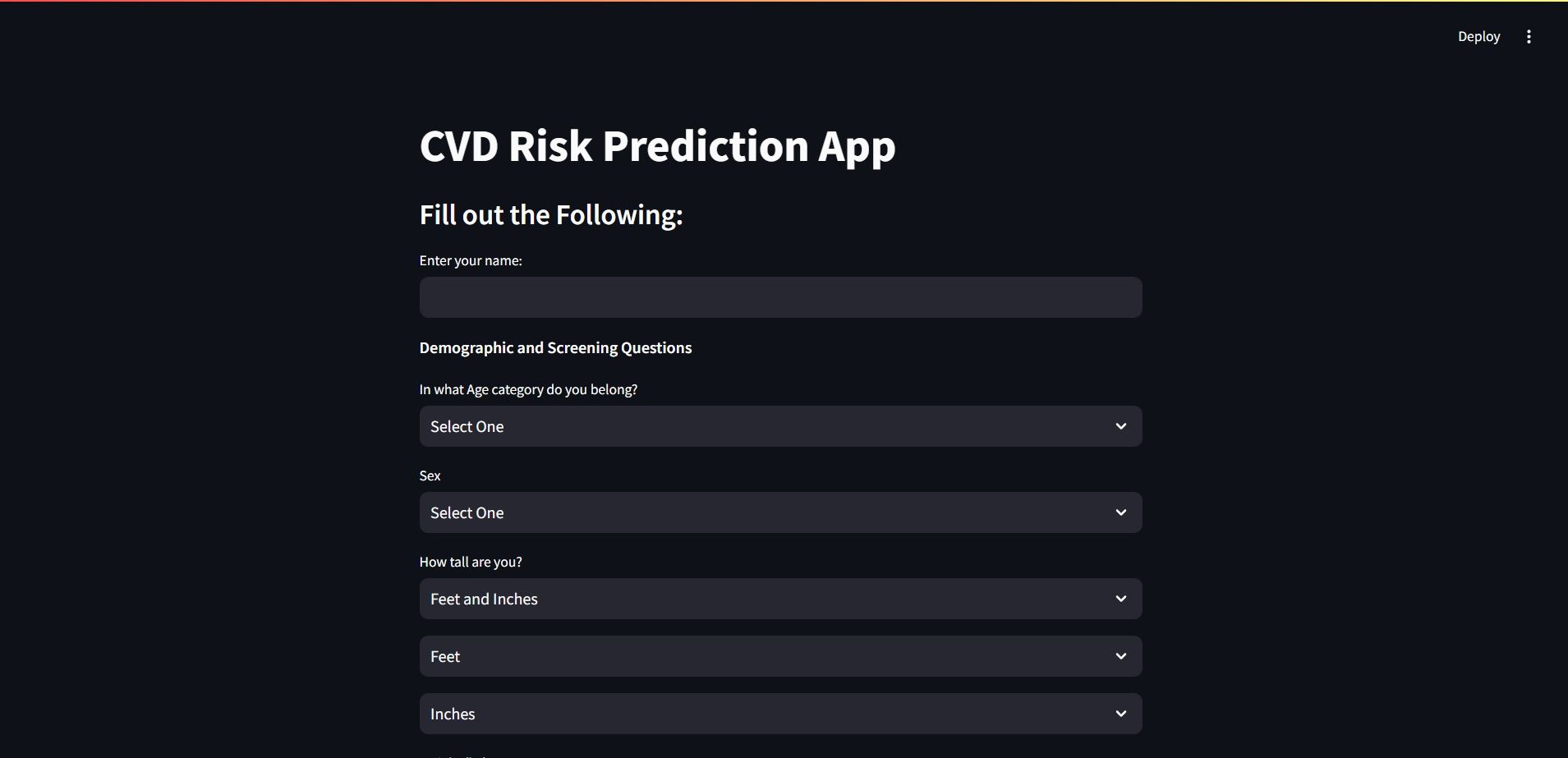
Welcome to CVD Risk Prediction App
An End-to-End Cardiovascular Disease (CVD) Risk Prediction Model Built with Machine Learning and Deployed Using Flask and Streamlit
Project Overview
The CVD Risk Prediction Model is designed to predict the risk of cardiovascular disease based on various health-related factors. Using machine learning and deep learning algorithms, the model provides accurate predictions with an impressive accuracy of 91.92%. It has been deployed as a web application through Flask and Streamlit, allowing users to input health data and receive predictions in real time.

This project is useful for both health professionals and individuals who want to assess their cardiovascular health risk by inputting personal health data.
Features of the Project
- Conducted univariate and bivariate analysis to explore the distribution and correlation of features with the target.
- Used correlation heatmaps to understand the relationships between different health features.
- Performed feature selection using domain knowledge and correlation analysis.
- Split the data into training and testing sets to evaluate the model.
- Trained several models including Neural Networks, Logistic Regression, and Decision Trees.
- Achieved a 91.92% accuracy with the Neural Network, validated by performance metrics like Mean Squared Error (MSE) and R² score.
- Tuned the model's hyperparameters to enhance its performance.
- Integrated the trained model into a Flask web application with a clean and intuitive interface.
- Deployed the application on Streamlit, allowing cloud-based access for users to get real-time predictions.
Model Performance and Deployment
- The Neural Network model achieved 91.92% accuracy, demonstrating its reliability in predicting cardiovascular disease risk.
- The Flask web application allows users to enter their health data and instantly receive predictions about their cardiovascular risk.
- Deployed on Streamlit for easy access via the cloud.
Technologies Used
- Python: Libraries: scikit-learn, TensorFlow, Pandas, Matplotlib, Seaborn, joblib.
- Flask: Used for creating the web application interface.
- Streamlit: Used for cloud-based deployment of the application.
- Jupyter Notebooks: Used for Exploratory Data Analysis (EDA) and model development.
Conclusion
The CVD Risk Prediction Model provides a reliable and accurate tool with 91.92% accuracy, making it a valuable resource for health professionals and individuals alike. The user-friendly interface, developed using Flask and deployed on Streamlit, ensures that the model is accessible to non-technical users for real-time cardiovascular risk assessment.